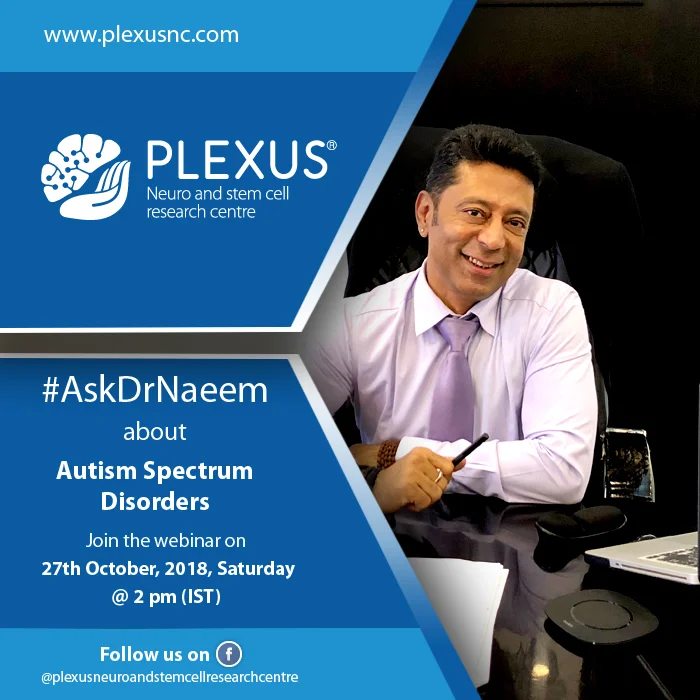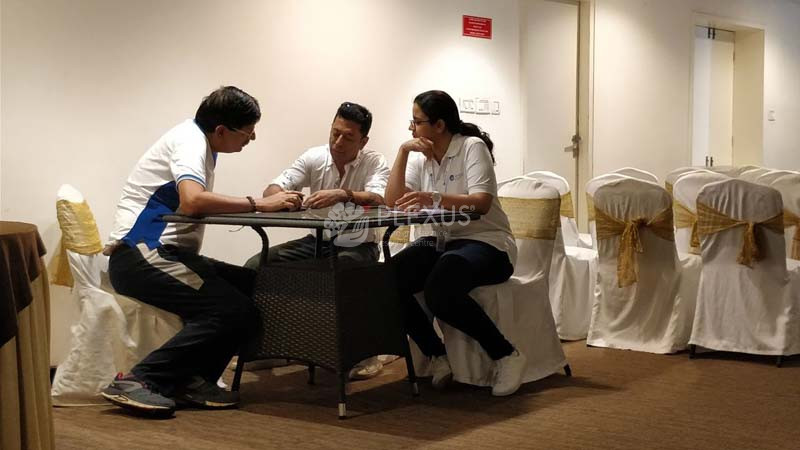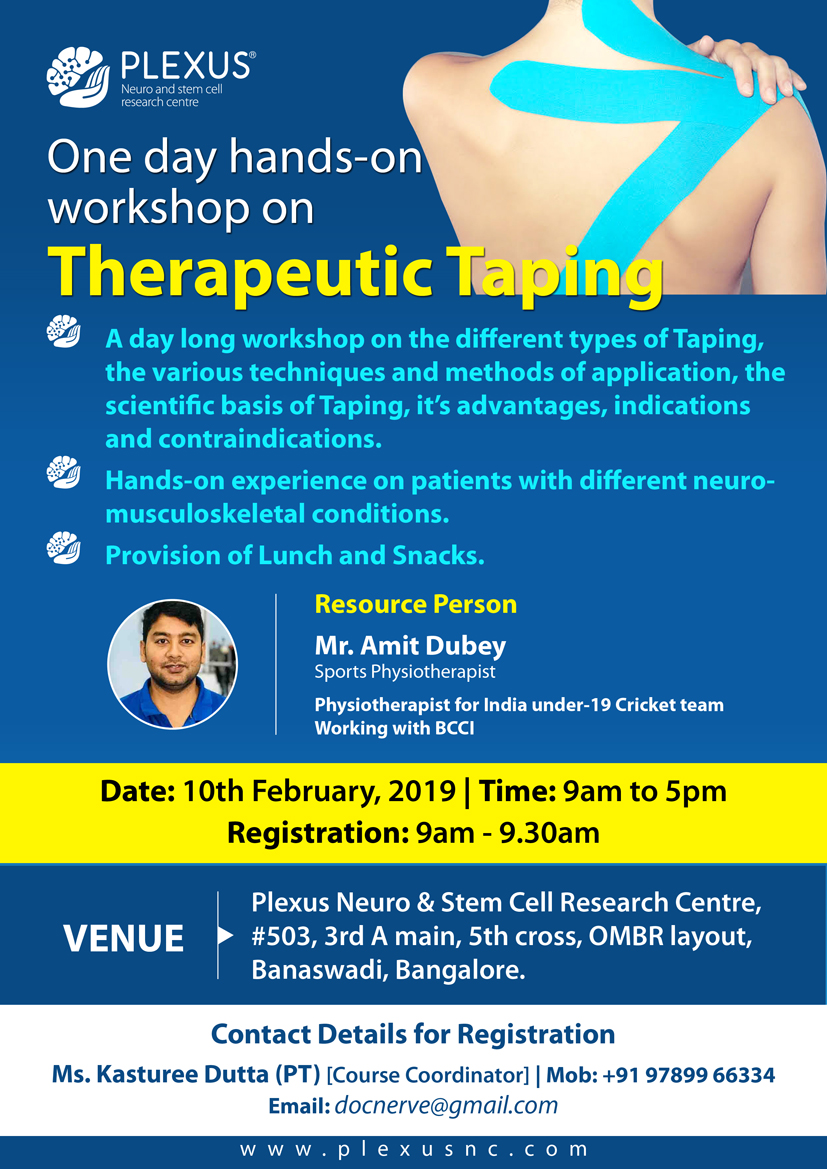
Living with Cerebellar Degenerative Ataxia (CDA) can be challenging — not just physically, but emotionally too. With the right care, support, and interventions, it’s absolutely possible to manage symptoms and lead a meaningful, independent life.
In this guide, we walk you through what CDA is, its symptoms, diagnosis, and how advanced therapies at Plexus are helping patients live better, fuller lives.
What is Cerebellar Degenerative Ataxia?
CDA is a progressive neurological disorder that affects the cerebellum — the part of the brain responsible for balance, coordination, and motor control. It belongs to a broader group of conditions called Spinocerebellar Ataxias (SCA), often inherited genetically.
As the cerebellum deteriorates, individuals experience increasing difficulty with balance, movement, speech, and fine motor tasks.
Causes and Risk Factors
CDA is primarily genetic, passed down through families. However, certain non-hereditary factors can also lead to cerebellar ataxia, including:
- Stroke or brain injury
- Multiple Sclerosis (MS)
- Chronic alcohol use
- Vitamin deficiencies (e.g., Vitamin E or B12)
- Infections affecting the nervous system
If there’s a family history of ataxia or you begin to notice symptoms, early evaluation is essential.
Symptoms and Early Signs
The symptoms of CDA can vary in intensity and progression, but often begin subtly. Early signs to look out for include:
- Unsteady, wide-based walk
- Frequent falls or imbalance
- Slurred speech (dysarthria)
- Tremors or clumsiness
- Nystagmus (involuntary eye movements)
- Difficulty with fine motor skills, such as writing or buttoning clothes
- Swallowing issues
Early intervention and therapy can make a significant difference in managing these symptoms effectively.
How is Cerebellar Ataxia Diagnosed?
Diagnosis usually begins with a neurological evaluation, followed by imaging and genetic testing. Common steps include:
- MRI scans to assess cerebellum degeneration
- Genetic testing (especially if there’s a family history)
- Blood tests to rule out other causes like vitamin deficiencies or autoimmune disorders
- Balance and coordination tests during physical exams
A clear diagnosis helps build a customized treatment plan tailored to your needs.
Treatment for Cerebellar Degenerative Ataxia at Plexus
While there is no definitive cure for CDA, treatment focuses on slowing progression and maximizing independence. At Plexus, our approach combines advanced regenerative therapies with personalized rehabilitation to improve outcomes and quality of life.
1. Regenerative Cell Therapy
Cell therapy helps repair damaged neurons in the cerebellum, aiming to improve coordination, motor control, and balance. This minimally invasive treatment has shown promising results and is led by Dr. Na’eem Sadiq, one of India’s top neuro-rehab specialists.
2. Holistic Rehabilitation Program
Our multidisciplinary team offers tailored therapy that focuses on your specific symptoms:
- Physiotherapy: For mobility, balance training, posture, and muscle control
- Occupational Therapy: Teaching techniques and tools for daily activities
- Speech Therapy: To manage communication and swallowing difficulties
- Neuropsychological Support: Addressing the emotional and psychological impact
- Caregiver Training: To empower loved ones in providing better support
Why Early Care Matters
With CDA being progressive, early support helps preserve function for longer. The sooner you begin therapy, the better your chances of maintaining mobility, independence, and quality of life.
To learn more about personalized care for cerebellar ataxia, contact Team Plexus today.
📞 +91 93555 33404 (Bangalore)
📞 +91 78159 64668 (Hyderabad)
📲 WhatsApp: +91 89048 42087
FAQ’s
What are the first signs of cerebellar degenerative ataxia?
The earliest signs usually involve unsteady walking, slurred speech, and hand clumsiness. Some may also experience tremors or changes in eye movement.
How long can you live with Cerebellar Ataxia?
Many individuals live into their 50s or 60s, though life expectancy varies. Supportive therapies can significantly enhance both longevity and life quality.
What is the best treatment for cerebellar degeneration?
A combination of cell therapy, rehabilitation, and lifestyle support (like vitamin supplements and adaptive strategies) is considered most effective.
What vitamin is good for Ataxia?
Vitamin E, B1, and B12 are particularly important for nerve health. A deficiency in any of these can worsen symptoms.
How quickly does Ataxia progress?
Progression differs for each person. In some, it advances slowly over decades; in others, symptoms may worsen more rapidly.
Is cerebellar degeneration fatal?
While not immediately life-threatening, CDA can impact life expectancy. Early and consistent care helps manage complications.
Does Cerebellar Ataxia get worse?
Yes, it is a progressive condition, but early treatment can help slow progression and manage symptoms.
What is the most common cause of Cerebellar Ataxia?
Genetics is the leading cause, especially in inherited types like Spinocerebellar Ataxia.
Is Ataxia considered a disability?
Yes. Ataxia can impair mobility, speech, coordination, and independence — making it a recognized neurological disability.
Is Ataxia an autoimmune disease?
No. Ataxia is primarily neurological, though some autoimmune conditions may trigger ataxia-like symptoms.
Is Ataxia a symptom of MS?
Yes, ataxia can appear as a symptom in advanced stages of Multiple Sclerosis due to nerve damage.
What are the 3 types of Ataxia?
Cerebellar Ataxia – affects balance and coordination
Sensory (Proprioceptive) Ataxia – due to loss of position sense
Vestibular Ataxia – related to inner ear/balance system dysfunction
How do I find the best neurology clinic for cerebellar ataxia?
Look for clinics with:
- A dedicated neurorehabilitation team
- Experience in treating ataxia and related conditions
- Access to advanced treatments like cell therapy
- Proven patient outcomes and personalized care plans
Plexus is one of the few centres in India offering all of the above under one roof.










